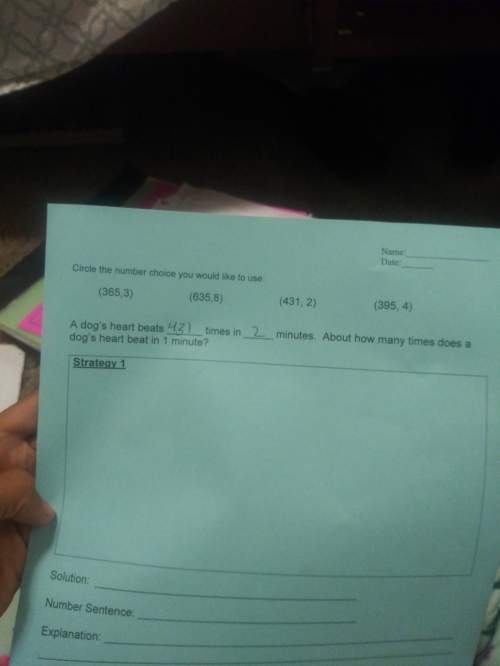

Answers: 3
Other questions on the subject: Physics

Physics, 21.06.2019 17:20, gymer630
American eels (anguilla rostrata) are freshwater fish with long, slender bodies that we can treat as uniform cylinders 1.0 m long and 10 cm in diameter. an eel compensates for its small jaw and teeth by holding onto prey with its mouth and then rapidly spinning its body around its long axis to tear off a piece of flesh. eels have been recorded to spin at up to 14 revolutions per second when feeding in this way. although this feeding method is costly in terms of energy, it allows the eel to feed on larger prey than it otherwise could. 1.a field researcher uses the slow-motion feature on her phones camera to shoot a video of an eel spinning at its maximum rate. the camera records at 120 frames per second. through what angle does the eel rotate from one frame to the next? 2. the eel is observed to spin at 14 spins per second clockwise, and 10 seconds later it is observed to spin at 8 spins per second counterclockwise. what is the magnitude of the eels average angular acceleration during this time? 3. the eel has a certain amount of rotational kinetic energy when spinning at 14 spins per second. if it swam in a straight line instead, about how fast would the eel have to swim to have the same amount of kinetic energy as when it is spinning? 4.a new species of eel is found to have the same mass but one-quarter the length and twice the diameter of the american eel. how does its moment of inertia for spinning around its long axis compare to that of the american eel?
Answers: 1

Physics, 22.06.2019 02:30, cooboy
Explain the difference between each pair of concepts. a. frequency and relative frequency b. percentage and relative frequency a. select the correct choice below. a. frequency is the total number of observations in a data set. relative frequency is the number of times a particular distinct value occurs. b. frequency is the number of times a particular distinct value occurs. relative frequency is the ratio of the frequency of a value to the total number of observations. c. frequency is the total number of observations in a data set. relative frequency is the ratio of the number of times a particular distinct value occurs to the frequency. d. frequency is the number of times a particular distinct value occurs. relative frequency is the ratio of the frequency of two different values.
Answers: 3

Physics, 22.06.2019 05:00, shimmerandshine1
At time t=0, a particle is located at the point (3,6,9). it travels in a straight line to the point (5,2,7), has speed 8 at (3,6,9) and constant acceleration 2i−4j−2k. find an equation for the position vector of the particle.
Answers: 2

Physics, 22.06.2019 18:30, ayahabdulhaqq2
An electron in an x-ray machine is accelerated through a potential difference of 1.00 × 104 v before it hits the target. what is the kinetic energy of the electron in electron volts?
Answers: 2
Do you know the correct answer?
Qual é a pressão total no fundo de um lago a 10 m de profundidade? Dados Ptotal=1x10na 5 N/m2, g=10m...
Questions in other subjects:
















